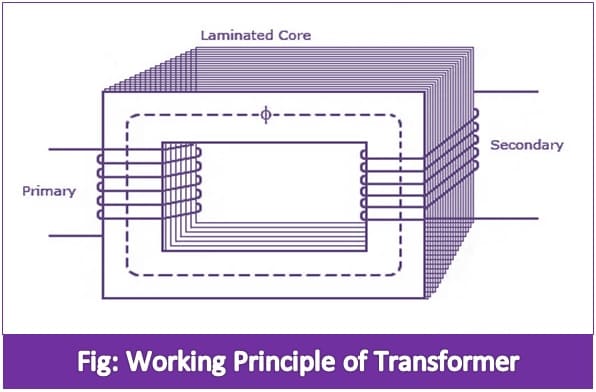Transformer:
Transformer is a stationary electric machine that transfers electrical power from one circuit to another circuit without a change of frequency. A transformer can increase or decrease the output voltage with the corresponding decrease or increase of the current.
Transformer Working Principle:
The basic principle of the transformer is based on the concept of mutual induction between two inductive coils which is linked by common flux. The simple form of a transformer has two inductive coils which are magnetically linked through a low reluctance path. But the two coils are electricity separated. The two coils are so designed that they hold high mutual inductance properties.

These two inductive coils are wound over a laminated core, made of silicon steel. Now one of the coils is connected to an alternating source of supply. Therefore, an alternating flux will be set up in the laminated core and when the fluxes cut across the coil, induces an emf on the coil. Almost all the fluxes are linked with the other or second coil and thereby generate or produce mutually induced emf on the second coil according to Faraday’s law of electromagnetic induction.